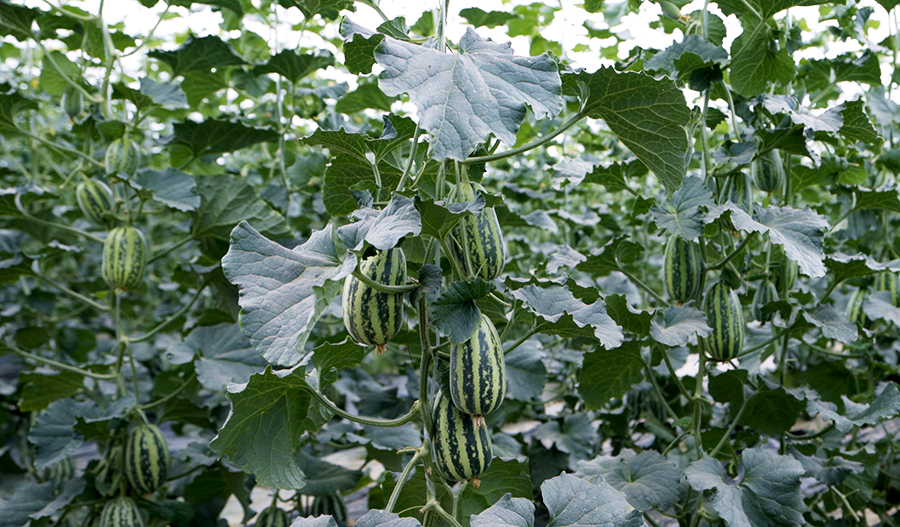ZHANG Zhipeng, LI Tian, HOU Leiping, SUN Sheng, XING Guoming
In this experiment, Qingya Baiyu, a thin-skinned melon cultivar, was used as the research object. Four different concentrations of CO2 were applied to thin-skinned melon from seedling stage. Afterwards, the effects of vine elongation on photosynthesis and growth of plants were studied to reveal the primary mechanism of photosynthesis improvement and determine the optimum CO2 concentration for thin-skinned melon cultivation in greenhouse in winter and spring in Northern China, providing theoretical basis for precise fertilization of thin-skinned Melon Cultivation in winter and spring facilities. Four kinds of CO2 concentrations:(400±12) μmol/mol(CK), (800±24) μmol/mol(T1), (1 200±36) μmol/mol(T2), (1 600±48) μmol/mol (T3), were applied to melon plants, respectively. Dry and fresh weight, chlorophyll content, photosynthetic parameters, light response curve, CO2 response curve and chlorophyll fluorescence parameters of melon plants at elongation stage were determined. The results showed that compared with CK, T3 treatment increased plant fresh weight 116.03%, aboveground fresh weight 118.66%, dry weight 78.70%;reduced dry-fresh ratio 17.28%, root shoot ratio 50.12%;increased net photosynthetic rate 221.55%, stomatal conductance 208.85%, intercellular carbon dioxide concentration 429.74%, transpiration rate 394.49%, maximum net photosynthetic rate 71.52%, the light saturation point 64.07%, apparent quantum efficiency 16.9%; reduced light compensation point 40.0%; increased maximum regeneration rate of RuBP 78.43%, actual quantum yield of PSⅡ 44.3%, photochemical quenching qP, qL 32.79%, 43.14%, photosynthetic rate ETR 41.1%. Compared with CK, T1 treatment increased chlorophyll a content 6.28%, maximum catalytic rate of Rubisco enzyme 52.8%, The VTPU 35.13%; reduced Fo 11.69%, Fo' 14.09%, Fm 16.01%, Fm' 18.92%, Ft 22.03%. So CO2 fertilization could effectively improve plant growth, improve photosynthesis, electron transfer efficiency, increase light saturation point, increase CO2 saturation point, reduce light compensation point, increase plant biomass, T3 ((1 600±48) μmol/mol) treatment effect significantly. The reason for increasing photosynthesis was due to the increasing chlorophyll content and the transport rate of propionate phosphate in low concentration, while the high concentration was mainly due to the increasing actual quantum yield Y(Ⅱ) of PSⅡ, photosynthetic electron transfer rate and photochemistry quenching.
